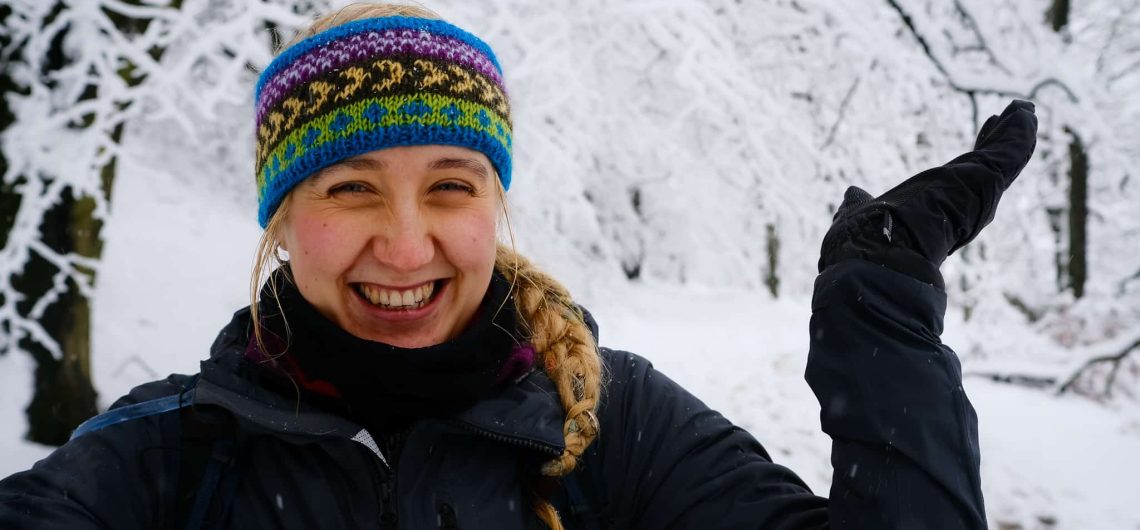When preparing for a Kilimanjaro climb, choosing or selecting the right trekking gloves is crucial for comfort and safety. While Kilimanjaro climbing doesn’t require technical expertise, it does demand mental and physical fitness. The right gear is essential for a successful summit attempt, and that includes suitable gloves.
Making the right choice of gloves may help keep your hands warm and comfortable when climbing Kilimanjaro. You should have a few different types of gloves, just like you would when layering your clothing.
To be clear, hiking, not mountaineering, is what it takes to climb Kilimanjaro. Your hands won’t be in the snow as a result. However, it does become chilly at night, particularly on summit night. Furthermore, it’s possible for it to be below zero. It’s crucial to keep your hands warm if you want to reach the Uhuru peak. It will be terrible if you don’t have the proper gloves since your hands will be chilly.
In light of this, here are some suggestions for different kinds of gloves you might want to pack for your climb.
| Glove Size Equivalents Some glove manufacturers use numbers to represent glove sizes, while others use letters that stand for Small, Medium, Large, etc. We always describe a pair of gloves’ size in the same way that the maker does. To convert between “letter sizes” and “number sizes,” use the table to the right. | |||||||||
Sizes for UNISEX Gloves and Mittens | |||||||||
– | XXS | XS | S | M | L | XL | XXL | XXXL | |
| Hand Circumference (inches) | 6.5 | 7 | 7.5 | 8.5 | 9 | 9.5 | 10 | 11 | |
– | |||||||||
Sizes for WOMEN’S Gloves and Mittens | |||||||||
– | XXS | XS | S | M | L | XL | XXL | XXXL | |
| Hand Circumference (inches) | – | 6 | 6.5 | 7 | 7.5 | 8 | – | – | |
– | |||||||||
MEN’S SIZES | |||||||||
– | XXS | XS | S | M | L | XL | XXL | XXXL | |
| Hand Circumference (inches) | – | 7 | 7 ½ – 8 | 8 ½ – 9 | 9 ½ – 10 | 10 ½ – 11 | 11 ½ – 12 | – | |
Here’s a comprehensive guide to help you choose the best trekking gloves for your Kilimanjaro adventure:
1. Gloves with Loops and Hooks: Ensure your gloves come with loops and hooks for convenient storage and rope access. These features help you keep your gloves organized and easily accessible during the trek.
2. Touchscreen-Friendly Gloves: While not a necessity, touchscreen-friendly gloves can be practical if you need to use devices or smartphones during the climb without removing your gloves.
3. Weather-Appropriate Gloves: Select gloves suitable for your trekking trail and the expected weather conditions. Consider the season and temperature range you’ll encounter, and choose gloves designed for those conditions.
4. Proper Fit: Gloves that fit well are essential for comfort and functionality. Ill-fitting gloves can cause discomfort and restrict your hand movements, which is especially important during a challenging climb.
5. Waterproof, Windproof, Breathable, Durable, and Insulated Gloves: Opt for gloves that offer a balance of waterproof, windproof, and breathable features. Durable materials ensure longevity, and insulation keeps your hands warm. These qualities are vital for tackling the changing weather conditions on Kilimanjaro.
6. Easy to Put On and Remove: You’ll need gloves that are easy to put on and remove during the trek. Struggling with your gloves can be frustrating, so choose gloves with user-friendly designs.
Types of Gloves for Kilimanjaro:
Glove Liners: Glove liners, made from materials like Merino wool and fleece, provide a versatile inner layer. They offer some water and wind protection and can be used alone in summer or combined with other gloves in winter.
Alpine Gauntlets: These thick and durable gloves have long cuffs and are designed for extremely cold conditions. Alpine gauntlets are excellent for cold hiking and trekking, and they often have technical features.
Fingerless Gloves: If your trek involves a lot of climbing or activities that require finger dexterity, fingerless gloves can be practical. They allow for maximum finger grip but provide less warmth compared to full-finger gloves.
Sun Gloves: For trekking in warmer seasons, consider sun gloves. These gloves offer UV protection, moisture-wicking properties, breathability, and temperature regulation to keep your hands comfortable.
Hybrid Gloves: Hybrid gloves combine different features, such as being 3-in-1 or 2-in-1 gloves. They often have a mitten-like design, allowing you to use your thumb and index fingers while keeping the other fingers together.
Heated Gloves: For extreme cold conditions, heated gloves provide additional warmth. Keep in mind that heated gloves can be bulkier and may reduce grip and dexterity.
Layers of Hiking Gloves:
Hiking gloves come in various shapes, sizes, and materials, and you can layer them for optimal protection:
- Waterproof Outer Gloves: These gloves, worn over all other layers, protect against frost, rain, and snow, keeping your hands warm and dry.
- Actual Gloves: The primary layer for warmth and protection.
- Inner Gloves: Worn beneath the actual gloves, these provide an extra layer of warmth and insulation, ensuring your hands stay cozy.
Merino Wool Gloves for Hiking and Trekking:
Merino wool is an excellent material for hiking and trekking gloves, often used in glove liners. It is soft, breathable, and warm, making it perfect for an inner layer.
Gore-Tex Gloves:
Gore-Tex gloves are an excellent choice, especially in extremely cold weather. They are breathable, waterproof, windproof, warm, and provide excellent grip and dexterity. For Kilimanjaro climbing in cold conditions, Gore-Tex gloves are highly recommended.
In conclusion, selecting the right trekking gloves is vital for a successful Kilimanjaro climb. Consider the weather, materials, and layers that best suit your needs, and ensure a proper fit for comfort and functionality.
![]()

